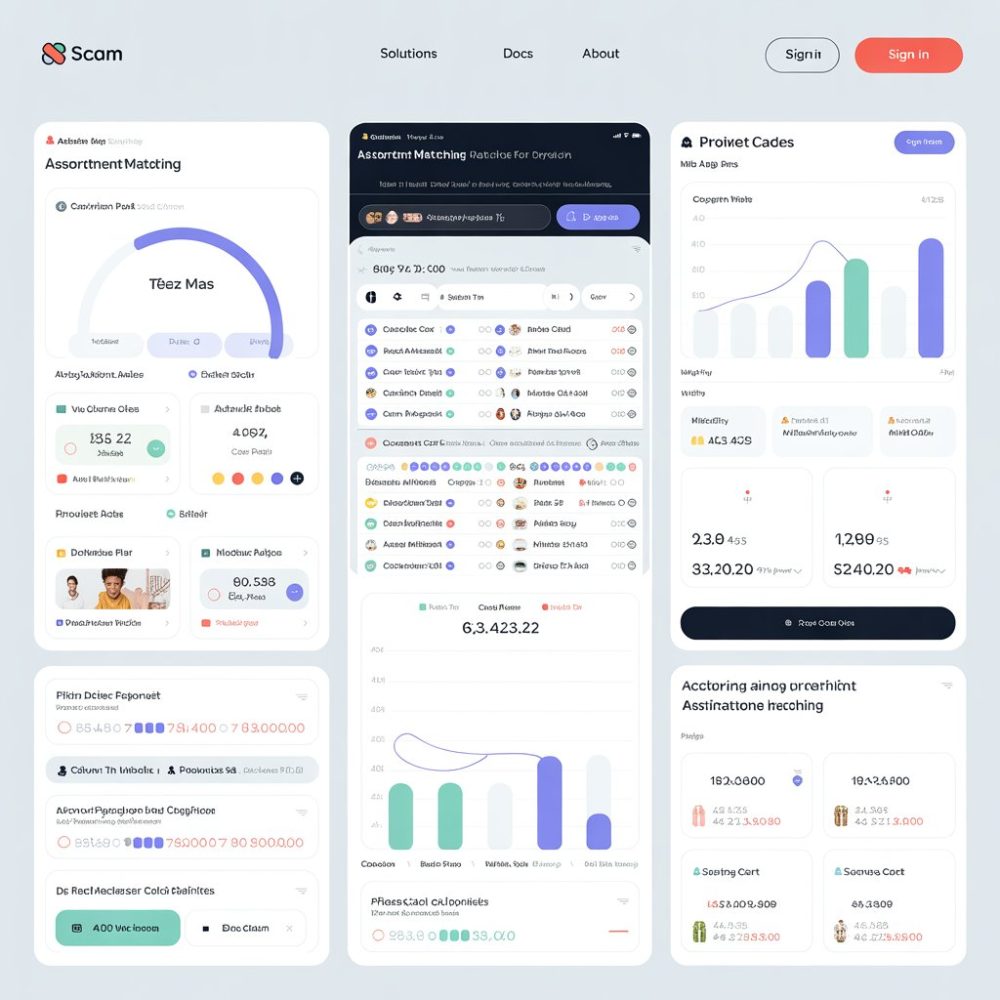LINKING & RANGE CONSISTENCY
Our solution guarantees total price consistency of linked products for a perfect Price-Image.
- Consistency check of automatically created links
- Definition of Value Drivers by product category
- Definition of coefficient profiles to determine price corridors
- Automatic range generation with our AI algorithms

THEY TRUST US
Linking: a coherent foundation for your pricing structure
Price consistency between related products is an essential strategic lever for strengthening brand perception and optimizing sales.
However, without automation, invisible differences between similar or complementary products can quickly weaken your price image and undermine the legibility of your product ranges.
These inconsistencies often confuse consumers, and can lead to a loss of confidence and even a negative impact on sales.
Adopt a high-performance linking solution, perfectly integrated with a pricing solution enables you to structure your assortments efficiently, guaranteeing rigorous price harmonization between linked products.
As a result, you gain agility, strategic coherence and total control over your pricing policy, while boosting your customers’ confidence.

How does product linking improve the consistency of your product ranges?
Linking products ensures logical price relationships between formats, volumes or variations, avoiding discrepancies that blur the positioning and clarity of the offering.
Inconsistent prices between linked products weaken consumer perception. Structured chaining enhances the credibility of the offer and supports the value strategy.
By structuring ranges via linking, buyers, category managers and pricing teams have a clear, automated decision-making framework, supported by customizable chaining rules.
Automating the detection of unjustified price discrepancies cuts the time needed to manage inconsistencies by a factor of three, while ensuring pricing consistency.
Linking enables us to identify logical sequences (entry, core, premium) to build coherent ranges aligned with business objectives.
Thanks to AI and integration with reference systems (ERP, PIM, article database), the solution enables harmonized, scalable management of all products, including private labels.
The structure of your ranges deserves better than approximations.
Our product linking solution gives you a powerful tool for organizing, controlling and harmonizing your intra-range prices in a consistent, automated and sustainable way.

Ensure price consistency across your ranges and strengthen your price image
In an environment where consumers compare products with a magnifying glass, price inconsistency within the same range directly undermines a brand’s credibility and the perception of its pricing strategy.
Consistency in pricing and linking is not just a detail: it’s a strategic pillar for inspiring confidence, facilitating the buying act and giving each product its rightful place.
Automatic consistency check of linked products
Avoid breaks in pricing logic between formats, flavors, volumes or variations, thanks to permanent control of product links.
Definition of Value Drivers by category
Structure your ranges according to the criteria that really count (volume, use, segment, etc.) to ensure a coherent pricing hierarchy.
Application of intelligent coefficient profiles
Determine realistic price corridors using coefficients adapted to each range, brand or product typology.
Automatic rate chain generation with AI
Our algorithms reliably identify, link and structure your ranges, even with large volumes of data.
Our customers are our first ambassadors

“Thanks to the optimix solution, we have not only reduced the number of errors, but also maximized our analysis capabilities, particularly for segmenting our competitors (BtoB, BtoC, etc.). Our business teams have managed to halve their alignment time, with increased productivity: over 12,000 linked products in just 3 minutes. The solution is complete and covers our needs 360 degrees. The tool is ergonomic and price management is simplified.”
My experience of using the Optimix solution and working with the teams has been very positive.
The software has significantly improved our pricing decisions, thanks to accurate information. We have benefited from a solid relationship with the Optimix teams, and the rapid deployment in 6 months has reinforced our confidence in this successful collaboration.
Optimix is a high-performance, feature-rich solution that has improved our daily lives. Implementation was very quick, smooth and efficient. Price management is now more efficient. We continue to develop the solution with functionalities adapted to our needs. It's essential for us to be able to keep pace with business requirements. I'm very satisfied with the collaboration, both during deployment and today.
Modules designed to cover your pricing needs from A to Z
All your pricing needs in a single tool
collect competitors' prices in-store
Collect in store competitor prices, carried out by our surveyors via a dedicated mobile application.
Match and chain your products
Linking of competing products (automatic based on EAN or compared using a proximity score).
Structure your ranges
with product linking
Link and structure your product ranges to improve readability, strengthen your price image and facilitate decision-making.
Create your pricing strategies
Design, configuration, and implementation of your pricing strategy. Creation of price alignment rules.
THESE PLUS
THAT MAKE THE DIFFERENCE
An advanced Data-Driven approach with AI to optimize your prices and inventory, by analyzing data in real time.
Visualize your pricing KPIs: price positioning, margins, elasticity, competitive gaps and strategy performance.
Business expertise integrated into the heart of the solution, and a flexible, customizable and actionable rules engine.
Do you want to keep your product ranges consistent? Contact us !
FAQ
Linking & range consistency solution
1. What is tariff chaining (linking)?
Price chaining consists of creating links between similar products to manage variations in volume, brand, fragrance, color, format, etc. This ensures price consistency within your range. This ensures price consistency within your range.
2. Why is it important to ensure range consistency?
A coherent range avoids cannibalization between products, optimizes margins, and enables you to adjust prices fairly according to the specific characteristics of each product.
3. How do I visualize my Linking Strategy?
The module features an intuitive graphical dashboard that clearly displays links between products. It highlights relationships, price differentials and feature differences, making it easy to analyze and optimize your range.
4. What types of chaining can I set up?
You can define links based on volume, brand, fragrance, color, promotional format, or any other criteria relevant to your assortment.
5. How does XPA: Optimix Pricing Analytics help avoid cannibalization?
It identifies directly competing products in your range, helping you to make informed decisions to maximize sales and avoid your products pulling the rug out from under each other.
6. Which KPIs are visualized in the Linking & Range Consistency module?
The module displays price differences between related products to detect over- or undervaluations.
You can monitor the margin generated by each segment of your range to better manage profitability.
The analysis identifies cannibalization between competing products in order to optimize the offering.
Sales volume per related product is tracked to adjust your sales strategy.
Compliance with defined price coefficients is monitored to ensure price consistency within the range.
7. How are automatic coefficients and pricing rules managed?
You can define automatic rules (for example, product A is always 10% more expensive than product B) to automate chaining and ensure price consistency across your range.
8. Can I adjust coefficients according to specific criteria?
Yes, you can customize coefficients according to brand, popularity, seasonality or any other factor important to your pricing strategy.
9. Is the module compatible with other in-house solutions?
Yes, the module integrates easily with your in-house tools (ERP, PIM, BI, etc.) via connectors or APIs. It guarantees seamless data synchronization and optimal use in your business processes.
